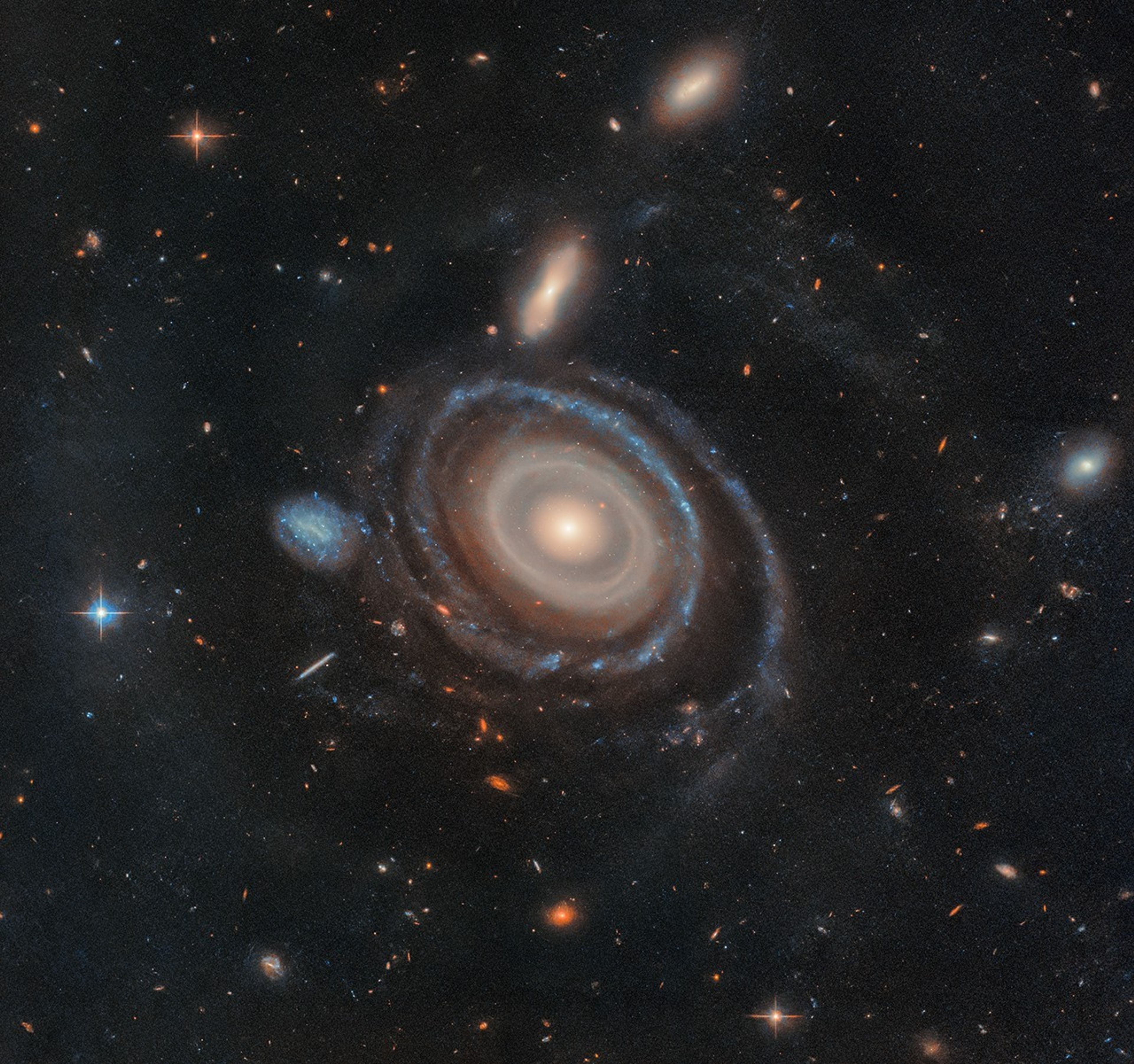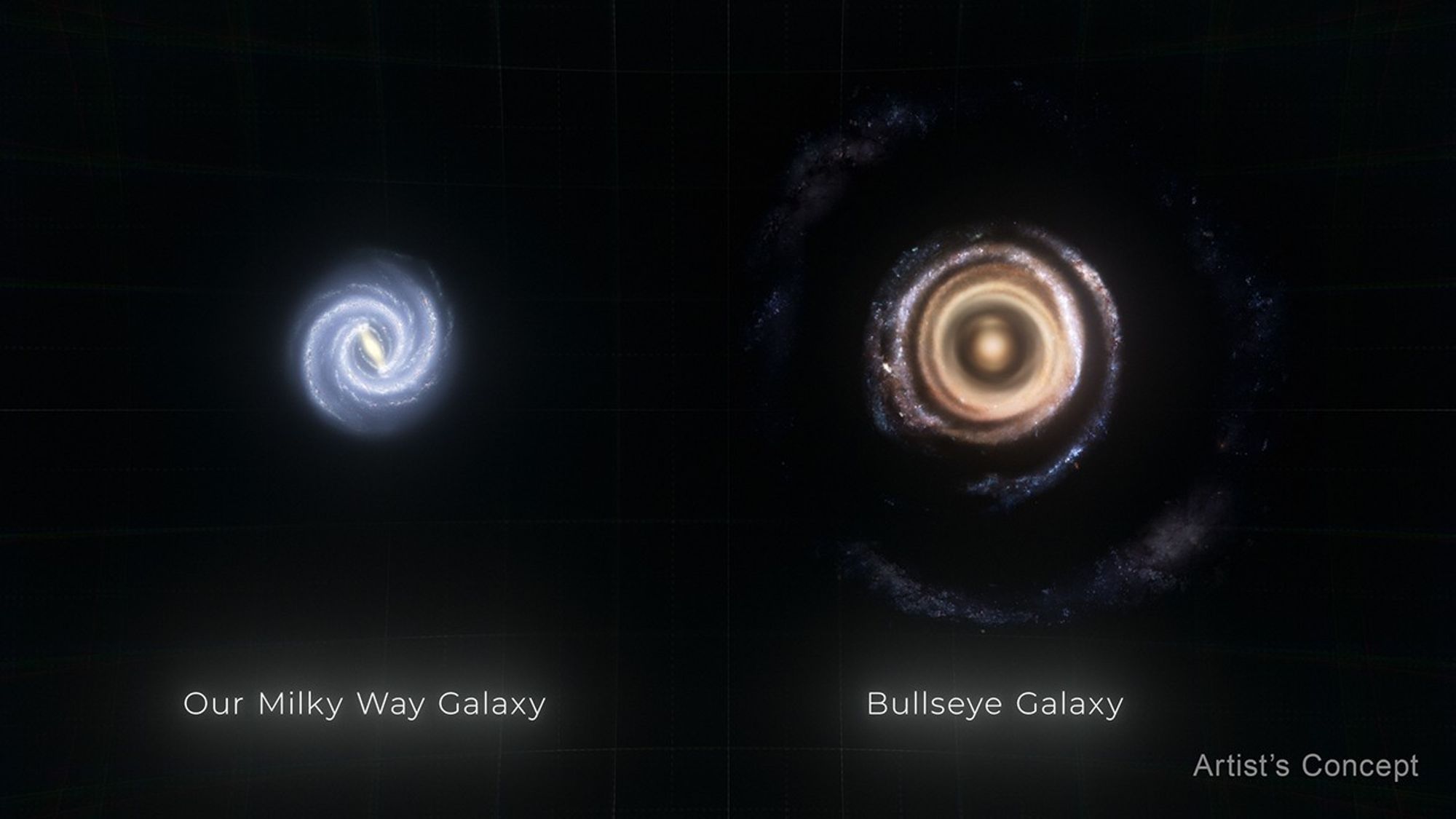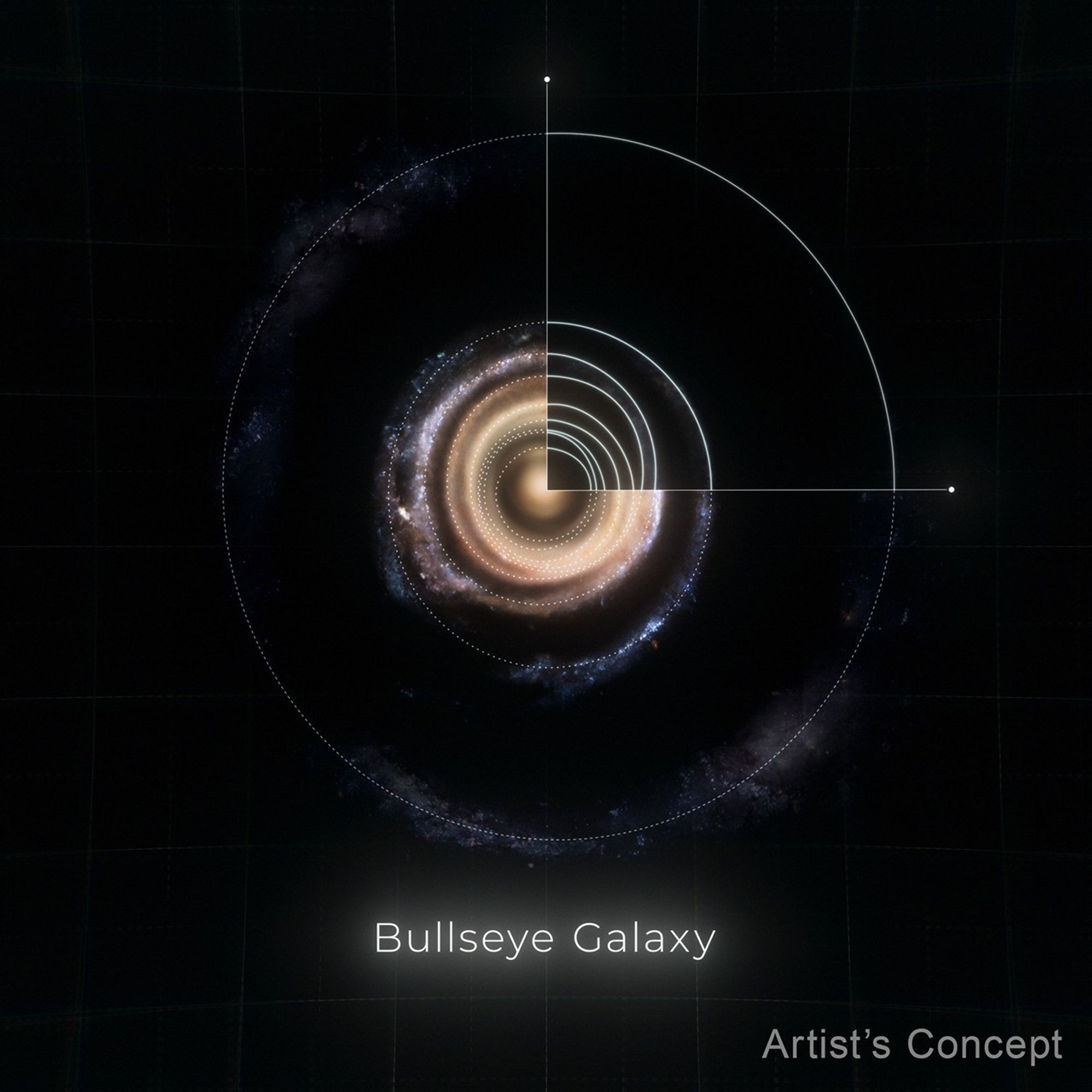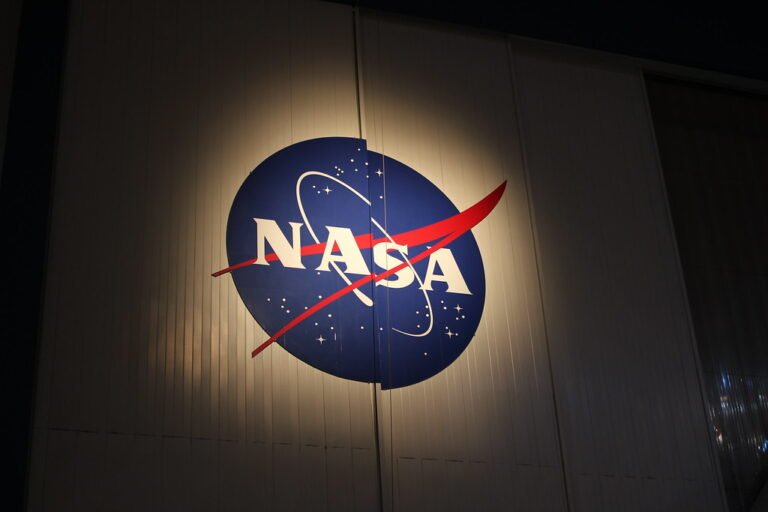
In a breathtaking cosmic discovery, NASA’s Hubble Space Telescope has unveiled a galactic masterpiece: the gargantuan galaxy LEDA 1313424, nicknamed the “Bullseye,” adorned with nine star-filled rings. This rare phenomenon was triggered by a smaller blue dwarf galaxy that shot through the Bullseye’s center like an arrow, leaving ripples of starlight in its wake. The findings, published on February 4, 2025, in The Astrophysical Journal Letters, mark a groundbreaking moment in astronomy, offering new insights into galactic collisions and star formation.

NASA, ESA, Imad Pasha (Yale), Pieter van Dokkum (Yale)
A Cosmic Bullseye
The Bullseye galaxy, located approximately 130,000 light-years from its smaller companion, is a staggering 250,000 light-years across—more than twice the size of our Milky Way. Its nine rings, the most ever observed in a single galaxy, were formed after the blue dwarf galaxy plunged through its center about 50 million years ago. This cosmic collision created waves of material that moved both inward and outward, sparking new regions of star formation and leaving behind a trail of gas that still connects the two galaxies.
“This was a serendipitous discovery,” said Imad Pasha, the lead researcher and a doctoral student at Yale University. “When I saw a galaxy with several clear rings, I was immediately drawn to it. I had to stop to investigate it.”
A Rare and Special Moment

NASA, ESA, Ralf Crawford (STScI)
Galactic collisions are common in the universe, but it’s exceptionally rare for one galaxy to pass directly through the center of another. “We’re catching the Bullseye at a very special moment in time,” said Pieter G. van Dokkum, a co-author of the study and a professor at Yale. “There’s a very narrow window after the impact when a galaxy like this would have so many rings.”
The rings, which appear unevenly spaced due to Hubble’s angled view, are a near-perfect match to long-standing theoretical predictions. “That theory was developed for the day that someone saw so many rings,” van Dokkum added. “It is immensely gratifying to confirm this long-standing prediction with the Bullseye galaxy.”
How the Rings Formed
To visualize the process, imagine dropping a pebble into a pond. The first ripple spreads out the farthest, while subsequent ripples form closer to the center. In the Bullseye galaxy, the first two rings formed quickly and expanded outward, while additional rings emerged in a staggered fashion as the blue dwarf galaxy’s trajectory disrupted the galaxy’s gas and dust.

NASA, ESA, Ralf Crawford (STScI)
While individual stars’ orbits remained largely undisturbed, groups of stars “piled up” to form the visible rings over millions of years. The gas, however, was carried outward, mixing with dust to create new stars that brightened the rings.
The discovery opens the door to further research, including determining which stars existed before and after the collision and modeling how the galaxy will evolve over billions of years. “We will learn how rare these spectacular events really are,” van Dokkum said, noting that NASA’s upcoming Nancy Grace Roman Space Telescope will make it easier to identify similar galaxies.
Hubble’s Enduring Legacy
This discovery is yet another testament to the Hubble Space Telescope’s transformative impact on astronomy. For over three decades, Hubble has revolutionized our understanding of the universe, from uncovering dark energy to studying exoplanet atmospheres. A joint project between NASA and the European Space Agency (ESA), Hubble continues to deliver groundbreaking science, even as new telescopes prepare to take the stage.
As we marvel at the Bullseye galaxy’s stunning rings, we’re reminded of the universe’s endless capacity to surprise and inspire. Who knows what other cosmic wonders await discovery?
For more details, read the full study in The Astrophysical Journal Letters and follow the latest discoveries from NASA’s Hubble Space Telescope.
Image Credit: NASA, ESA, and the Hubble Space Telescope Team


